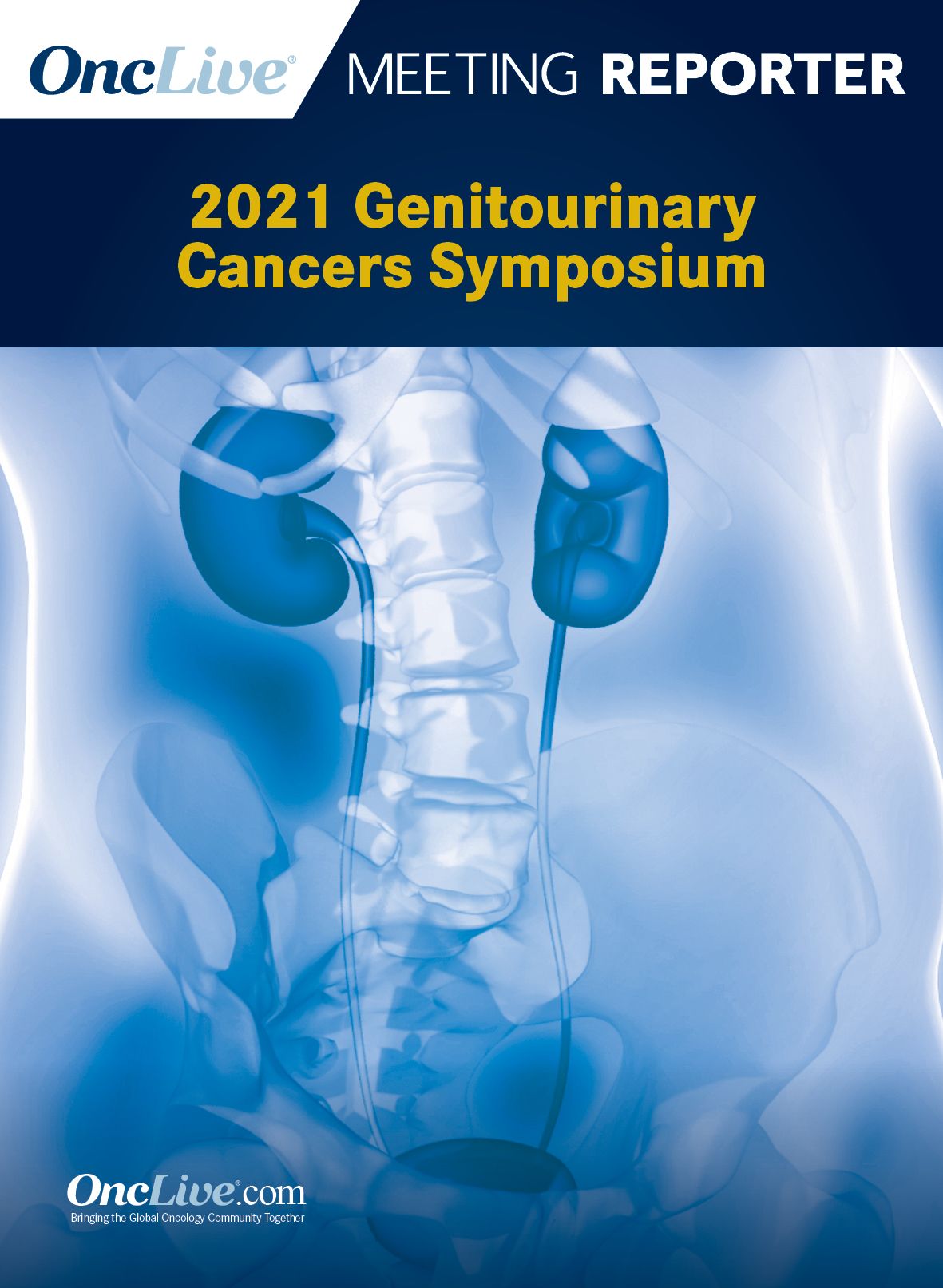Frontline Immunotherapy Correlates With Improved OS Over TKIs in Advanced Non–Clear Cell RCC
February 11, 2021 - First-line treatment with immune checkpoint inhibitor–based regimens could be linked with an improvement in overall survival versus select targeted therapies in patients with metastatic non–clear cell renal cell carcinoma.
Jeffrey Graham, MD

First-line treatment with immune checkpoint inhibitor–based regimens could be linked with an improvement in overall survival (OS) versus select targeted therapies inpatients with metastatic non–clear cell renal cell carcinoma (RCC), according to results of a retrospective study presented during the 2021 Genitourinary Cancers Symposium.
Results showed that among 1181 patients with metastatic RCC, the median OS in those who received an immune checkpoint inhibitor–based regimen was 28.6 months (95% CI, 17.4–not reached) versus 19.2 months (95% CI, 16.7-21.9) with a VEGF inhibitor and 12.6 months (95% CI, 10.3-14.5) with an mTOR inhibitor.
Moreover, the median time-to-treatment failure (TTF) in those who received an immunotherapy-based regimen was also longer at 6.9 months (95% CI, 2.8-14.0) versus 5.1 months with a VEGF inhibitor (95% CI, 4.6-5.7) and 3.9 months (95% CI, 3.0-5.1) with an mTOR inhibitor.
In the entire population of patients included in the analysis, the objective response rate (ORR) achieved in those who received an immunotherapy-based regimen was 25%; it was 17.8% in those who received VEGF targeted therapy and 5.8% in those who received mTOR-targeted treatment (P = .001).
“Immune checkpoint inhibitor–based frontline therapy appears to be associated with improved OS compared to VEGF and mTOR targeted therapy in treatment-naïve metastatic non–clear cell RCC, even after adjustment for International Metastatic RCC Database Consortium [IMDC] risk, histology, and age,” lead study author Jeffrey Graham, MD, of the University of Manitoba, and colleagues, wrote in a poster on the data.
Immunotherapy options have induced impressive activity in patients with metastatic clear-cell RCC; as such, these options have become part of standard frontline treatment. Although non–clear cell RCC represents about 15% of all kidney cancers, findings supporting the efficacy of immune checkpoint inhibitors up front has remained largely limited.
To address this need, investigators launched a study to detail the real-world effectiveness of frontline approaches containing immune checkpoint inhibitors in patients with metastatic non–clear cell RCC.
To perform a retrospective analysis of the IMDC, investigators included all patients who had non–clear cell histology. Patients were categorized into 3 groups based on first-line treatment: single-agent VEGF therapy, single-agent or combination immunotherapy, and single-agent mTOR therapy. For the analysis, investigators looked at outcomes, such as ORR, TTF, and OS.
The median age of the entire patient population was 60.6 years, 65.4% were male, 76.4% had undergone nephrectomy, and 16.6% had sarcomatoid features. The most common histologic subtype across the groups was papillary disease (54.2%), and most patients fell into the intermediate IMDC risk group (55.1%). Across the groups, 25.1% of patients had liver metastases, 34.2% had bone metastases, and 3.6% had brain metastases.
Of the 1181 patients included in the analysis, 78.2% had received VEGF treatment (n = 924), which included sunitinib (Sutent; n = 632; 68.4%), pazopanib (Votrient; n = 171; 18.5%), sorafenib (Nexavar; n = 72; 7.8%), cabozantinib (Cabometyx; n = 12; 1.3%), or other (n = 37; 4%). Moreover, 15.8% had received mTOR inhibitors (n = 186) in the frontline setting, such as temsirolimus (Torisel; n = 141; 75.8%) or everolimus (Afinitor; n = 45; 24.2%).
The remaining 5.5% had received immune checkpoint inhibitor–based therapy (n = 65), which could include nivolumab (Opdivo) and ipilimumab (Yervoy; n = 20; 30.8%), atezolizumab (Tecentriq) plus bevacizumab (Avastin; n = 14; 21.5%), nivolumab (n = 13; 20.0%), pembrolizumab (Keytruda; n = 13; 20.0%), or other (n = 5; 7.7%).
Investigators performed a multivariable Cox regression analysis to adjust for imbalances in prespecified prognostic covariates, such as IMDC risk, histologic subtype, and age. Results revealed that the hazard ratio (HR) for OS between immune checkpoint inhibitor–based therapy and VEGF treatment was 0.58 (95% CI, 0.35-0.94; P = .03), while it was 0.48 (95% CI, 0.29-0.80; P = .005) for immunotherapy-based treatment versus mTOR therapy.
Additionally, the HR for TTF with immunotherapy-based treatment versus VEGF therapy was 0.72 (95% CI, 0.72; 95% CI, 0.51-1.0; P = .06) and it was 0.54 (95% CI, 0.37-0.78; P = .001) for immunotherapy-based treatment versus mTOR treatment.
When looking at ORR per histologic subgroup, those with papillary disease who received VEGF treatment experienced an ORR of 13.0% versus 3.7% with mTOR therapy and 31.6% with immunotherapy-based treatment (P = .002). In patients with the chromophobe subtype, the ORRs were 20.6% versus 13.6% versus 9.1% in those who received VEGF therapy, mTOR therapy, and an immunotherapy-based regimen, respectively (P = .527). Those with an unclassified disease subtype experienced ORRs of 15.2%, 0%, and 33.3%, respectively (P = .03).
“The ORR of 25% in the entire population is consistent with the existing literature of immune checkpoint inhibitor therapy in non–clear cell RCC, with lower responses seen in the chromophobe subgroup and higher responses seen in the papillary subgroup,” the authors of the poster wrote. “The study population was predominantly papillary RCC, and the effectiveness of immune checkpoint inhibitor–based therapy in other less common histologic subtypes remains inconclusive.”
The results yielded from the analysis must be confirmed in prospective, randomized clinical trials, the authors concluded.
Reference
Graham J, Wells C, Dudani S, et al. Effectiveness of first-line immune checkpoint inhibitors (ICI) in advanced non-clear cell renal cell carcinoma. J Clin Oncol. 2021;39(suppl 6):316. doi:10.1200/JCO.2021.39.6_suppl.316




